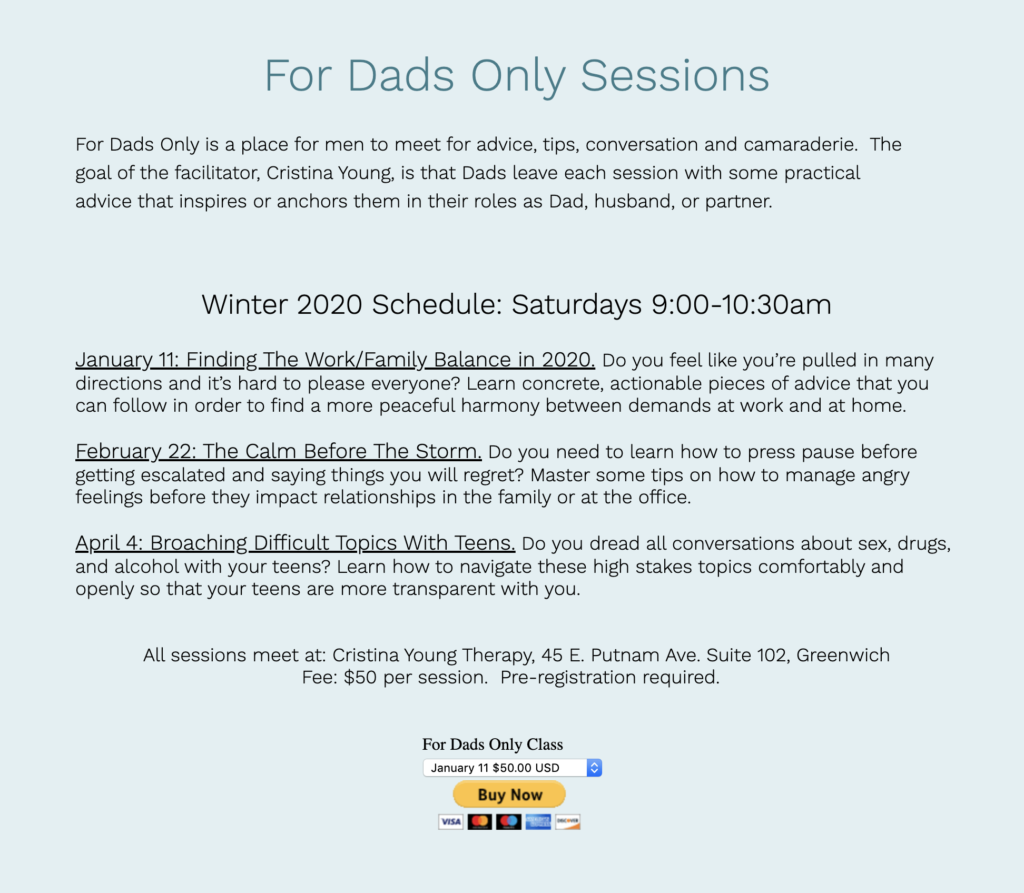I must admit, our holiday break in Vermont was pretty heavenly. Lots of time outdoors skiing and hiking, and very little time plugged into my phone or computer. BUT now that I am back at my desk and thinking about the months ahead, I am getting really excited to write and share more with you all in the days ahead. I have book/movie reviews to publish, a few newly discovered products I can’t live without, and plenty of interviews with new voices I am eager to share with you. For today, I bring back one of my favorite voices, Cristina Young, with her thoughts on parenting well through the tween/teen years.
This past fall I decided to do a deep dive into understanding what is ahead of me as my (gasp!) 11 year old boldly (and bravely) makes her way into adolescence. I bought and read Untangled, by Lisa Damour. It’s an absolutely spot-on book about what is happening inside the mind of adolescent girls. I bought the book 3 years ago when Damour spoke at our school. I had a sinking suspicion I would be needing it in the future. In the book she shares anecdotes that are relatable and gives parents actionable things they can say and do to help their tweens and teens navigate this incredibly important time in their lives. Both Damour and Young have me fully convinced that if we want our children’s pre-frontal cortexes to mature and develop we have to back off, allow them to figure challenges out for themselves, and give them space to process tough situations on their own (knowing we are there to support them when trials are too grown up to handle alone). It’s been an eye-opening process for me.
Then I decided to join a “Moms of Girls” discussion group with Cristina Young. I have featured her wise words many times in the past on the blog, and was absolutely blown away by how powerful it was to be in a room full of other moms sharing our trials, tribulations, and victories on the parenting front with each other. Each week Cristina led a discussion that was insightful and actionable as far as what we could be doing at home to better help our daughters succeed each day. Some of us had toddlers, while others had young teens, and we were all able to relate to each other and give each other much needed perspective on just how universal the parenting experience is. We are not in this alone. Often times we just need to be vulnerable, honest, and up front with others to reap the rewards of learning from each other.
And for those of you with sons – while this book and Cristina’s questions below are catered to girls, I think you will find they are quite relative to both sexes. Since my son is only 5, and his greatest concern is how he can learn to leave Target without a complete meltdown over not getting to buy a coveted lego set, he isn’t my main focus on the emotional developmental front right now. His time will come I am sure. 😉
Q&A with therapist Cristina Young

When does it all begin? I know some think adolescence starts with puberty in the early teens. Is that true?
Frances Jensen reminds us in her book entitled The Teenage Brain of an incredible fact about our bodies: We are all born with our entire set of sex hormones. They lay dormant and quiet, hibernating for the first 10-12 years of our life. Then, around age 12, one gene produces a single protein that triggers the waterfall of these stored up hormones. Next, from ages 12-24, there’s a burst of growth and maturation in our brains that never happens again in our lifetime. Some parents might notice the first signs of adolescence, however, as early as nine years old. While this is considered early, some girls start with breast buds and underarm odor at that young age. Others show no signs of physical changes until closer to 12 or 13. Some girls also show early signs of a willingness to push back against their mothers, being a little rude or fresh. These are the very first steps towards what is known as “individuation” or the appropriate and necessary pushing away from parents and what they stand for in order to begin to form one’s own identity and, eventually, leave the nest.
With those numbers in mind, when might parents expect to be hearing more about “drama” at school?
Having worked in quite a few school settings, I noticed the girl drama started for some around third grade, believe it or not. It was around this time that girls started to take notice of who wielded power in groups, which girls seemed to be left out regularly, and even which girls wore trendy or stylish clothing or accessories. The early roots of the “cool girl group” seemed to take hold either in third or fourth grade. Of course, birth order impacts a good bit of this, as well. Girls who are the youngest of three girls, for example, will be much more likely to try to keep up with their older sisters. This can have a “contamination effect” on other, impressionable girls in the classroom.
What are the best ways to help our children when they come home with big complaints about school, teachers, friends? Best phrases to use?
For starters, I always recommend that we just mirror back what we hear with empathy. For example, if a girl tells her mom that she is angry about the way a teacher spoke to her in the classroom, I would suggest that the mom begin with: “Sounds like that teacher really made you mad today!” Just start with validation and empathy. All of us like to know that the person we are talking to really “gets us.” Once the daughter feels heard and understood, she is what we call “more regulated” and might be ready to move into problem-solving. This is when the mom can ask a few more questions, such as “Would you like some help solving this? Do you just want me to listen? Or do you have a plan already figured out for how to proceed?” Put the daughter in the driver’s seat of her life. Let her dictate how little or how much she wants to rely on you for next steps. It also helps to be aware of timing. If the daughter still seems flustered or upset, she’s probably not ready to move to problem-solving. It may be time to take a break from the entire conversation, get a snack, get some exercise or fresh air, and agree to return to the talk a few hours later.
Is it normal for adolescents to float in and out of friend groups?
Yes!! Tweens and teens are stuck in the phase of development that Erikson coined “identity formation.” It is totally appropriate and normal for kids at this age to align themselves with certain kids only to change their minds when they notice they feel more validated by another group of kids. While this is tricky for adolescents, it’s normal and important because they are trying to find their tribe. Hurt feelings can result from this fluidity between groups, of course, but the more we can normalize this process for our kids, the better.
Should parents encourage their children to stick with certain friendships and discourage those we think might not be a good fit?
This is a great question and one that I hear often from parents. More than anything, we want our kids to feel a strong sense of autonomy and ownership of their choices and lives. This helps build their internal drive. If we notice them hanging around a child we deem questionable, we might start by simply asking our child, “What is it that you enjoy about so-and-so?” Let them tell you the traits they admire that, perhaps, you hadn’t noticed. If safety is a concern, you can let your child know that you are fine with the friendship continuing, as long as all get-togethers happen at your house where you can keep a watchful eye. One other note on this: unless a clear safety issue presents itself, take this opportunity to follow your child’s lead. Demonstrate to them that you mean it when you say, “It’s Your Call.” The risky friend may lead your child slightly astray and lessons will be learned. The risky friend may reject your child and lessons will be learned. Try not to stand in the way of lessons that your child needs to learn, even if they are slightly painful or embarrassing. Stay in your lane.
What is the best way to handle a pre-teen meltdown? Interact or ignore?
A pre-teen meltdown can be all-consuming unless you go into it armed with your own tools for remaining neutral, calm, and steady. Envision a force field around yourself that will remind you that nothing your child says is personal—it is all a reflection of where her brain is, developmentally. If she launches insults your way as you attempt to help her, remain calm, quiet, and unresponsive. The moment you engage or react, you have sunk to her level. Know that she is not ready to engage with you yet. Perhaps you can say to her ( in an effort to connect and validate), “Wow. You seem really angry right now. I will give you a few moments to cool down.” Or you can say, “Your body language tells me that you’re furious right now. Let me know when you might want to tell me what’s going on.” Then step away for a few minutes before you check in again. Honor her need for space. Do not force the issue as any attempts at forcing or controlling will not be helpful at this point–or any point.
What should we tell our children to do if they seem to be being picked on by another student at school?
This is a complicated question that requires a parent to think carefully and calmly, and not to be reactive in any way. If the child tells her story in a way that triggers you, as the parent, it is not time to problem solve or react because when we are triggered, we cannot access our prefrontal cortex, the part of the brain that helps us with sound decision making and good judgment. Step away, breathe, go for a walk, play with the dog, call a friend and calm down. Once you regain your cool, you can comfort your child in the ways mentioned above: “I’m so sorry this happened to you. You seem really upset. I would be, too.” Or “What a shame. I haven’t seen you this upset in a while.” Notice the first step is just to name your child’s feelings aloud. No problem-solving or fixing happens at this stage. Once you notice your child calming down and finishing their story, you can begin to think about what comes next.
Depending on the age of the child, several steps can ensue. If your child is a bit older and more mature, I would suggest engaging in the same line of questioning as above: “Would you like some help solving this? Do you just want me to listen? Or do you have a plan already figured out for how to proceed?” Listen carefully and patiently and then evaluate. Listening is the most underrated parenting skill out there! If you think her plan sounds reasonable, applaud her for figuring out a good next step and reassure her that you are always there if she needs more help. If your child is on the younger side, and cannot think of how she wants to proceed after you ask her, you may want to intervene with more advice. Perhaps you can say: “Maybe you can find some space and distance between you and so-and-so during the school day. If she chooses the art center, maybe you should be sure to pick the science table or the math table.”
It’s also helpful to arm your child with a strong “comeback” that makes her feel back in control of the situation. I like to call these “back-pocket-phrases” because I used to teach my kids (metaphorically) to have one ready to go in their back-pocket, whether they were on the playground, at a swimming lesson, in Spanish class, or at a birthday party. Brainstorm with your daughter so that she can find a phrase that resonates with her. Some examples might include: “Back off!” or “Quit it!” or “That’s enough!” or “Stop it!” or “I don’t wanna hear it!” or “Oh, p-lease!” The point is to make sure it’s a phrase that your child practices in the mirror, and that she feels confident and comfortable saying. Remind her to look so deeply into the eyes of the mean kid that she memorizes that kid’s exact eye color. Ask your child to practice delivering this “back-pocket phrase” in the mirror until she has it memorized and her delivery is strong and confident. Remember that some kids who tend to be rule followers and quite eager to please might need permission from you to be direct or what they might consider “rude” or even a bit “flip” or “harsh.” Remind them that it usually just takes one strong response to get the mean kid to move on to someone else.
Finally, you can remind your child that if, after one or two good tries with the “back-pocket-phrase” the mean kid persists, it’s time to get an adult at school involved. You and your child can strategize together about which adult is best to approach and why. The child should never ask for adult help, however, until she has tried to stand up for herself, first. Some kids will need LOTS of encouragement, many dress rehearsals, and huge praise while trying to secure this skill. Pile it on!
Help us understand what’s happening inside the adolescent brain and why it’s best for us to let them flounder a little and figure things out on their own.
The teenage brain needs LOTS of practice connecting the dots. Every time we jump in and pave the way or solve the problem for our teen, we deny them an opportunity to connect more dots. I like Karen Young’s description of the teenage brain. She writes a helpful blog called, “Hey Sigmund.” Here’s what she says: Your brain will wire and strengthen from the back to the front. One of the first parts of the brain to develop is the amygdala, which is involved in instinctive, impulsive, emotional, aggressive reactions. It’s great for keeping you alive if there’s trouble, but not always great when it comes to making balanced decisions. To make good decisions, the front of the brain needs to be involved. This is the pre-frontal cortex and it is the ‘calm down’, sensible, logical part of the brain that is able to consider consequences and put the brakes on emotion, behaviour or decisions that might cause trouble. Here’s the rub: Because your pre-frontal cortex won’t be fully developed until you’re 24, your decisions, problem-solving and the way you respond to people will be heavily influenced by the amygdala. The adolescent brain is often compared to a high-performance sports car – fast, powerful, and keen to go hard on the bends – but without the brakes.
Any great tips on sibling interactions during these years?
My mantra regarding siblings is this: unless there’s blood or fire, let the siblings work it out for themselves. Siblings teach other everything humans need to know about all future interactions: how to play, fight, negotiate, take turns, laugh, compromise, whine, let go, complain, apologize, rib each other, collaborate, be fiercely loyal and love each other. No other situation in life is as fertile a learning platform for all of these basics as is the sibling dynamic. Try to build your tolerance for the bickering, name calling, backstabbing, and fighting. It’s all a ploy to see whom you love more, which is just a base instinct. Tell them aloud, often, “I have enough love for all of you times one hundred!” Make it clear as often as possible that they don’t need to fight for your attention or love. Put headphones on, if need be, to help you ignore the fighting. Finally, pluck them out of the sibling dynamic as often as possible to spend time with each of them, one on one, outside of the home. Come to know them as just them, not as “the youngest” or “the middle child.” Let them have some time to shine and wow you just as is, based on their sweet, charming, quirky, little personality. You’ll both be glad you set the time aside!
*** BONUS INFO***
And one last shout out to the dads! (Or the moms who give the dads great ideas about what they can do to be better parents!) Cristina is hosting a Dads Group on Saturdays this winter. It’s sure to be a thought provoking time for any and all who attend.



Many thanks for all your support, as always, Lindley!
Thanks for this great piece on a topic of increasing interest! It comes at just the right moment. YOu are the BEST!